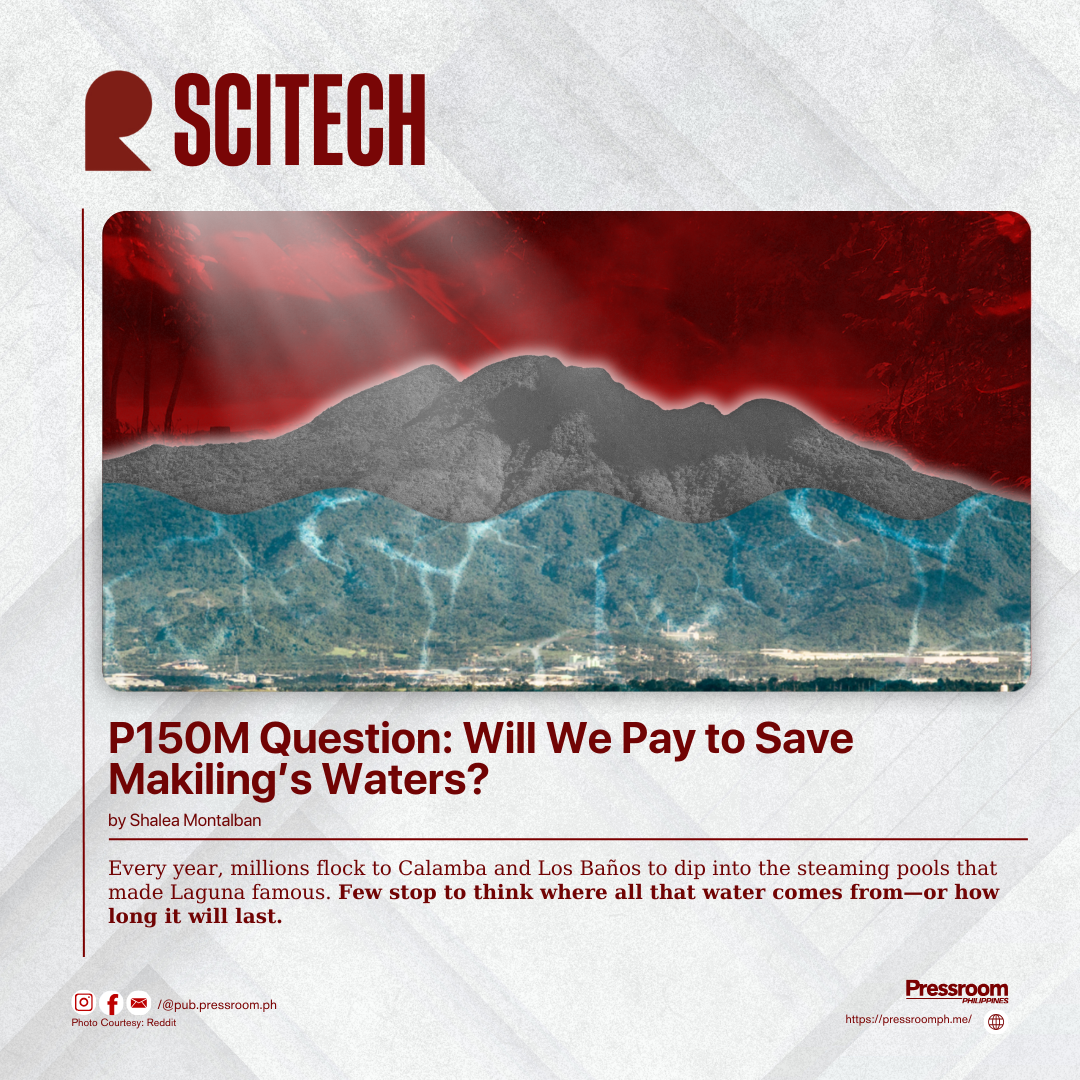𝘃𝗶𝗮 𝗞𝗲𝗶𝗷𝗶 𝗞𝗲𝗻 𝗦𝗶𝗿𝗶𝗯𝗮𝗻, 𝗣𝗿𝗲𝘀𝘀𝗿𝗼𝗼𝗺 𝗣𝗛
A new flavor of finance—money used to jingle in our pockets, now it flows invisibly through our screens. But are we truly in control, or just following the recipe of rapid spending?
𝗙𝗮𝘀𝘁, 𝗙𝗿𝗲𝘀𝗵, 𝗯𝘂𝘁 𝗮𝘁 𝗪𝗵𝗮𝘁 𝗖𝗼𝘀𝘁?
In the modern world, technology is all about making life easier. Digital wallets, much like the microwave in your kitchen, promise efficiency and speed. Instead of waiting minutes for your coffee C2 Red, you can heat up a cup in seconds. Similarly, instead of waiting in line or digging for cash, you can tap, scan, and go. But just like cooking, convenience doesn’t always mean better—sometimes, the shortcuts come at a cost.
𝗜𝗻𝘀𝘁𝗮𝗻𝘁 𝗧𝗿𝗮𝗻𝘀𝗮𝗰𝘁𝗶𝗼𝗻𝘀, 𝗜𝗻𝘀𝘁𝗮𝗻𝘁 𝗚𝗿𝗮𝘁𝗶𝗳𝗶𝗰𝗮𝘁𝗶𝗼𝗻
E-wallets redefine ease. A simple tap or QR scan completes transactions in seconds, eliminating the need for physical cash or cards. No more fumbling for coins or dealing with candy as change. The efficiency is undeniable, making digital wallets the go-to payment method.
But speed isn’t their only perk. Many e-wallets offer smart financial tools—real-time expense tracking, loyalty rewards, and AI-driven insights. These features help users manage money better, offering a level of financial control that traditional cash transactions simply can’t match.
Yet, just as prepackaged meals simplify cooking, they can also make us unaware of what we’re consuming—or, in this case, how fast we’re spending.
𝗨𝗻𝗱𝗲𝗿𝘀𝘁𝗮𝗻𝗱𝗶𝗻𝗴 𝘁𝗵𝗲 𝗥𝗲𝗰𝗶𝗽𝗲
E-wallets function as digital versions of physical wallets, storing money electronically and allowing users to pay via mobile apps, QR codes, or contactless transactions. But are they purely digital? Not quite. In many ways, they operate similarly to debit or credit cards, just without the plastic. The funds can be loaded from bank accounts or received through transfers, making them versatile for both personal and business use.
In the Philippines, e-wallets like GCash, Maya, and ShopeePay have revolutionized transactions, bridging the gap between traditional banking and digital finance. While cards have long been the go-to for cashless payments, e-wallets now dominate due to their accessibility—even for those without formal bank accounts.
𝗔 𝗥𝗲𝗰𝗶𝗽𝗲 𝗳𝗼𝗿 𝗥𝗶𝘀𝗸?
Despite their benefits, e-wallets come with risks. Cybersecurity threats lurk, much like unhealthy ingredients hidden in fast food. Phishing scams, data breaches, and fraud attempts lurk in the shadows of digital transactions. Strong passwords and two-factor authentication help, but no system is invincible. Are we trading security for convenience?
Beyond security, accessibility remains an issue. While e-wallets thrive in urban centers, their use in Cagayan is growing but not yet widespread. Many businesses in Tuguegarao City have adopted QR-based transactions, but in smaller towns and rural barangays, cash remains king.
Limited internet connectivity and smartphone availability make it challenging for some residents to transition fully to digital payments. While the convenience is evident, bridging the gap between digital finance and traditional banking remains a challenge in the region. While e-wallets thrive in urban areas, many in rural and developing regions still lack the smartphones or stable internet required for digital payments. This digital divide creates financial exclusion, much like owning an advanced kitchen gadget but lacking the electricity to use it.
𝗗𝗶𝗴𝗶𝘁𝗮𝗹 𝗕𝗮𝗻𝗸𝗶𝗻𝗴 𝗶𝗻 𝘁𝗵𝗲 𝗟𝗼𝗰𝗮𝗹 𝗦𝗰𝗲𝗻𝗲
Is digital banking truly replacing traditional methods in the Philippines? The answer depends on where you are. In Metro Manila and other urbanized parts of the country, cashless transactions are widely accepted—from convenience stores to jeepney fares. Even here in Cagayan, more businesses are integrating QR codes and online payments into their systems. But for many, especially in far-flung areas like Sta.Clara in Gonzaga—a remote area in the mountains, traditional cash-based transactions still dominate. The shift is happening, but it’s not yet universal.
Filipinos have shown a strong inclination toward digital banking, largely driven by necessity. During the pandemic, online transactions became the norm, and even those hesitant before were forced to adapt. Now, with platforms offering free transfers, bill payments, and even loan services, the benefits are undeniable. However, trust remains a key issue—many still prefer the security of holding physical cash.
𝗙𝗿𝗲𝗲𝗱𝗼𝗺 𝘁𝗼 𝗦𝗽𝗲𝗻𝗱 𝗼𝗿 𝗙𝗶𝗻𝗮𝗻𝗰𝗶𝗮𝗹 𝗛𝗮𝗻𝗱𝗰𝘂𝗳𝗳𝘀?
E-wallets promise financial empowerment, but they also raise concerns about data privacy and control. In the Philippines, the shift toward digital banking is accelerating, especially in urban areas where convenience outweighs tradition. Many Filipinos, particularly younger generations, prefer e-wallets over traditional banking due to their accessibility and ease of use.
However, in rural areas, the reliance on physical cash remains strong. Cultural trust in tangible money and concerns about cybersecurity continue to shape preferences, creating a divide between digital adopters and those who still favor the traditional banking system. Who owns your financial data? How is it used? As governments and financial institutions scramble to regulate digital payments, the balance between security and surveillance grows increasingly delicate.
For individuals, e-wallets offer independence—faster access to money, fewer banking hurdles, shorter lines, and better financial insights. For small businesses, they provide an easy way to receive payments without costly bank fees. But if not carefully regulated, could e-wallets become tools for financial tracking rather than financial freedom?
𝗧𝗵𝗲 𝗙𝘂𝘁𝘂𝗿𝗲 𝗼𝗳 𝗙𝗶𝗻𝗮𝗻𝗰𝗲: 𝗦𝗹𝗼𝘄-𝗖𝗼𝗼𝗸𝗲𝗱 𝗼𝗿 𝗠𝗶𝗰𝗿𝗼𝘄𝗮𝘃𝗲𝗱?
E-wallets are shaping the present, but they may not be the final destination. With emerging technologies like blockchain and decentralized finance (DeFi), the way we exchange value is evolving once again. Cryptocurrencies and decentralized networks challenge the need for traditional financial institutions altogether.
Much like how new cooking methods emerge, financial technology will continue to evolve. Whether it’s cryptocurrency, blockchain, or a more secure digital wallet system, the key is not just to move fast—but to move wisely. After all, the best recipes, whether for meals or money, are those that stand the test of time.

.png)
.png)



